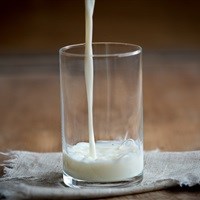Long life milk is democratising nutrition for many Africans, because it has qualities beneficial to transportation and storage, while it hurdles a major continental challenge: electricity supply.
Fridges - from those used on vehicles to transport chilled products to those in retail outlets and, finally, peoples’ homes - need some form of electricity. Unfortunately, according to The World Bank, the total installed electricity-generating capacity in 48 sub-Saharan Africa countries is roughly the equivalent of Spain. Frighteningly, as much as one-quarter of that meagre supply is offline at any given time, due to poor maintenance and ageing infrastructure. Regardless, one in five sub-Saharan Africans simply do not have access to electricity and fewer than 40% of African countries will achieve universal access to electricity by 2050.
Milk and dairy products are nutrient dense. They provide high-quality protein and micronutrients in an easily absorbed form, which can benefit both nutritionally vulnerable people and healthy people. Milk is an ideal source of protein and calcium, and also contains a range of essential vitamins and minerals.
Pure milk by a different process
Long life milk is the same good quality and pure milk by a different process. Ultra-high temperature, or UHT, is the process that leads to long-life milk. It is one of the key ingredients to producing fresh milk that lasts so long – without any preservatives. UHT milk is subjected to special thermal treatment, which destroys germs and preserves vitamins and nutrients. In the absence of bacteria activity and with the pre-sterilisation of the packaging, the milk becomes less perishable; through ultra-pasteurisation, the validity period of milk is prolonged without adding preservatives. The temperatures to which it is heated lie beyond the boiling point (135C to 150C), but the boiling time is very short: two to four seconds). This very short stage of heating and cooling destroys bacteria and micro-organisms and ensures the preservation of vitamins and proteins, unlike normal milk boiling, which doesn’t destroy all germs and bacteria, but instead destroys its nutritional value.
Coupled to the advanced packaging, milk remains as fresh when opened as the day it was packaged. The carton packaging, which contains six critical layers, locks in the freshness and nutrition of the product and locks out what would destroy it – the sun’s rays, believe it or not, and bugs in the air around us. The layers consist of paper, the main component, which provides strength and stiffness, a small amount of polyethylene that makes the package liquid-tight and provides a barrier against micro-organisms, and aluminium foil that keeps air, light and off-flavours or odours out, all of which have the ability to cause liquid foods to spoil. That’s why, if you keep the lid on a long life pack, it can be kept unrefrigerated for at least six months.
Consumption by LSM segment
Whether it be low availability for formal distribution channels in certain locations, poor infrastructure, low income or a non-milk-drinking culture, Africans do not consume nearly the quantities of milk and milk products as Europeans. Milk’s penetration in South Africa across all LSM segments is on average 90%, but the volume of consumption is quite different between the LSM segments. Consumption is around 20 litres per household a year for LSM segments one to four, and much higher at around 100 litres a year per household for LSM segments 9 to 10.
Growing UHT volumes indicate that fresh, ambient milk is important to many Africans as a source of nutrition and whole foods. Simultaneously, health and convenience are appealing factors to the growing, urbanising middle class of Africans supporting growth of on-the-go portion packs flavoured milks. According to Nielsen, in 2015 long-life milk represented 54.7% of total volume of liquid milk in South Africa, following a growth trend in the past two years. Besides its convenience for transportation and storage, the variety of sizes of containers also contributes to the availability of milk across informal trade, such as spaza shops. Today, long life makes it possible to access nutritious, good quality, and safe milk in cities and rural areas. The convenience of ambient storage helps families never running out of milk in the busy life of big cities.
All types of milk will continue to have an important role for consumers and retailers, but long life makes possible nutrition to reach far and beyond, and that’s described into Tetra Pak’s vision of making food safe and available everywhere and to everyone, in all African countries.




























